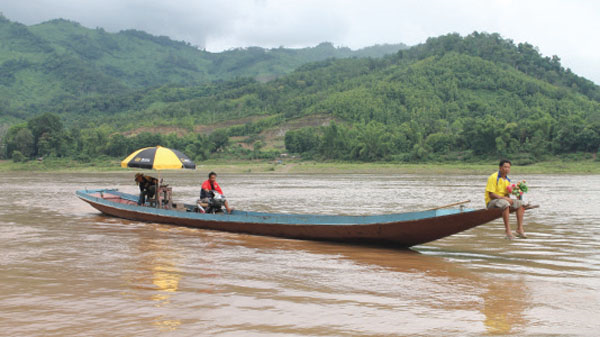KPL
(KPL) The Mekong river water quality has reportedly improved slightly since 2014, and is considered safe for human health and aquatic life and agricultural use, according to Mekong River Commission.

The Mekong river water quality is reportedly improved, MRC says.
(KPL) The Mekong river water quality has reportedly improved slightly since 2014, and is considered safe for human health and aquatic life and agricultural use, according to Mekong River Commission.
The Mekong River Commission (MRC) has been measuring water quality since its early days.
In 1985, the Interim Mekong Committee, the forerunner of today’s MRC, established a Water Quality Monitoring Network (WQMN) in response to concerns of the Member Countries on potential water pollution and its transboundary implications.
The monitoring aims to provide timely data and information on the water quality status of the Mekong River and its tributaries, detect changes in water quality and take preventive and remedial actions if any negative changes are detected, identify transboundary implications of water pollution, provide data that can be used by stakeholders as a baseline to assess and identify potential impacts of developments.
Today the monitoring network consists of 48 stations that measure 19 water parameters monthly from locations on the Mekong mainstream and its tributaries and the Bassac River.
Water is collected and analysed at national laboratories under the overall technical guidance of the MRC, which maintains a quality assurance program.
MRC Water Quality Indices (WQI) are used to assess the water quality of the Mekong River. In the Lower Mekong Basin, the indices are divided into three types: WQI for protection of aquatic life, WQI for protection of human health, and WQI for Agricultural Use.
Based on WQI for protection of aquatic life and human health, the water quality is classified into five categories including Very Poor, Poor, Moderate, Good, and High.
The latest monitoring of the Mekong and Bassac rivers indicates a slight improvement in overall water quality from 2014.
The water quality is deemed to be in good condition for the Protection of Human Health and Aquatic Life, meaning that water conditions rarely decrease from desirable levels.
In addition, there are no restrictions on using the river water for any type of agriculture.
Historically, the Mekong River has been a high suspended solids transport river with mean total suspended solids (TSS) of about 155.3 mg/L.
However, an assessment of how the health of the river changes over time revealed that the mean TSS levels had decreased significantly from about 118.7 mg/L in 2000 to 80.2 mg/L in 2015.
Despite this decrease in TSS levels, nutrients and chemical oxygen demand levels remained relatively constant over the same period.
In terms of transboundary pollution, there was no strong evidence of transboundary pollution in 2015, as concentrations of key pollutants remained within the MRC Water Quality Guidelines. The details of water quality in the Lower Mekong Basin can be found in the annual Water Quality reports which are published on the MRC website.
Water Quality Monitoring is one of the core activities of the MRC and the organisation is tirelessly working to maintain acceptable/good water quality of the Mekong River. Water Quality Monitoring is part of the MRC Procedures for Water Quality (PWQ), one of five procedural rules to manage the Mekong basin.
The other four deal with maintenance of flows (PMFM), water use monitoring (PWUM), data and information sharing (PDIES), and consultation on infrastructure projects (PNPCA). Individually and collectively these procedures are ahead of the curve for their time and place and demonstrate the countries’ commitment to work together.
KPL